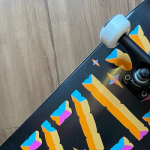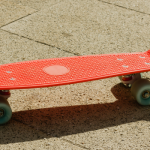Skateboarding is such an awesome sport, you know? It’s got this massive following and has been thrilling people for years.
But here’s the thing, like with any sport, having the right equipment is super important. That’s where skate shoes come in, man.
They’re designed specifically for skateboarding and are a must-have for all the enthusiasts out there.
But hey, there’s been a lot of talk about whether these shoes are actually good for your feet.
So, in this article, let’s dig into all the different aspects of skate shoes and how they might affect your precious feet. Cool, right?
Design Features of Skate Shoes:
Skate shoes are engineered with specific features to cater to the dynamic movements and impact associated with skateboarding. Some of these design elements include:
Flat Soles:
Skate shoes are renowned for their flat soles, a design crafted to establish ideal contact with the skateboard deck.
This flat sole configuration significantly enhances board feel, empowering skaters to execute tricks with precision and control.
The seamless connection between the foot and the deck is essential for mastering the nuanced movements inherent in skateboarding.
However, it is essential to note that this design, while advantageous for skateboarding, may not cater to the arch support needs of individuals with specific foot conditions.
Grippy Outsoles:
A distinctive characteristic of skate shoes is the emphasis on outsole grip. These outsoles are meticulously designed to provide exceptional traction on the skateboard deck.
The superior grip plays a pivotal role in ensuring stability and control during complex maneuvers, a critical aspect of skateboarding.
Despite this benefit, it’s worth considering that the same grippy outsoles may not be the most comfortable for activities that involve extended periods of walking or standing.
The nature of the grip designed for skateboarding may contribute to foot fatigue and discomfort in other contexts.
Durability and Impact Protection:
Recognizing the high-impact nature of skateboarding, skate shoes incorporate features to enhance durability and impact protection.
Reinforced materials are strategically placed in high-wear areas to withstand the rigors of skateboard use, extending the lifespan of the shoes.
Furthermore, some models integrate advanced cushioning and impact protection technologies.
These features aim to absorb shock during landings, reducing stress on the feet and enhancing overall comfort for skateboarders.
However, the durability-centric design may not perfectly align with the preferences of individuals seeking maximum comfort for everyday activities.
Potential Concerns for Foot Health:
While skate shoes are purposefully designed for the demands of skateboarding, there are potential concerns related to foot health:
Lack of Arch Support:
One notable aspect of skate shoes is their flat sole design, strategically crafted to facilitate optimal contact with the skateboard deck.
This design, while advantageous for precise board control, may pose challenges for individuals requiring arch support.
Those with flat feet or other arch-related issues may find the absence of adequate arch support uncomfortable during prolonged use.
Insufficient support can contribute to discomfort, fatigue, and potentially lead to foot problems over time.
Recommendation:
For individuals needing arch support, orthotic insoles or shoes with built-in arch support may be considered. Choosing the right footwear that aligns with both skateboarding needs and individual foot characteristics is crucial.
Impact on Walking and Standing:
The grippy outsoles characteristic of skate shoes are designed to provide superior traction on the skateboard deck, ensuring stability during maneuvers.
However, these outsoles may not be as accommodating for activities involving extended periods of walking or standing.
Individuals who use skate shoes as casual footwear outside the skate park might experience foot fatigue and discomfort due to the specialized grip designed for skateboarding performance.
Recommendation:
For those who transition between skateboarding and other daily activities, having alternative shoes with more comfortable outsoles for walking or standing may be beneficial. This approach helps mitigate the potential discomfort associated with prolonged use of grippy skate shoe outsoles.
Sizing and Fit:
Skate shoes often feature a snug fit, a deliberate design choice to enhance control and responsiveness while on the skateboard.
However, improper sizing or a fit that is too tight can lead to various issues such as blisters, calluses, and overall discomfort.
It’s essential to strike a balance between a secure fit for skateboarding and a comfortable fit for daily wear.
Recommendation:
Ensuring the correct sizing and fit is crucial. Individuals should prioritize comfort while maintaining the necessary snugness for skateboarding. Trying on shoes before purchasing and being mindful of any discomfort during wear is key to preventing issues related to sizing and fit.
Conclusion:
While skate shoes are essential for optimal performance in skateboarding, their design may not align with the needs of everyone, especially those seeking maximum comfort and support in daily activities.
It is essential for individuals to be mindful of their foot type, comfort preferences, and intended use when choosing footwear.
Also, incorporating supportive insoles or alternating between different types of shoes can help mitigate potential issues associated with extended use of skate shoes.
So, striking a balance between style, performance, and foot health is key for skateboarders and casual users alike.
![Why do skateboarders hate scooters? [Reasons + Tips] Why do skateboarders hate scooters? [Reasons + Tips]](https://bedoper.site/wp-content/uploads/2023/04/Why-do-skateboarders-hate-scooters-150x150.png)


![How fast do skateboards go downhill? [90 mph (145 km/h)] How fast do skateboards go downhill? [90 mph (145 km/h)]](https://bedoper.site/wp-content/uploads/2023/04/How-fast-do-skateboards-go-downhill-150x150.png)
